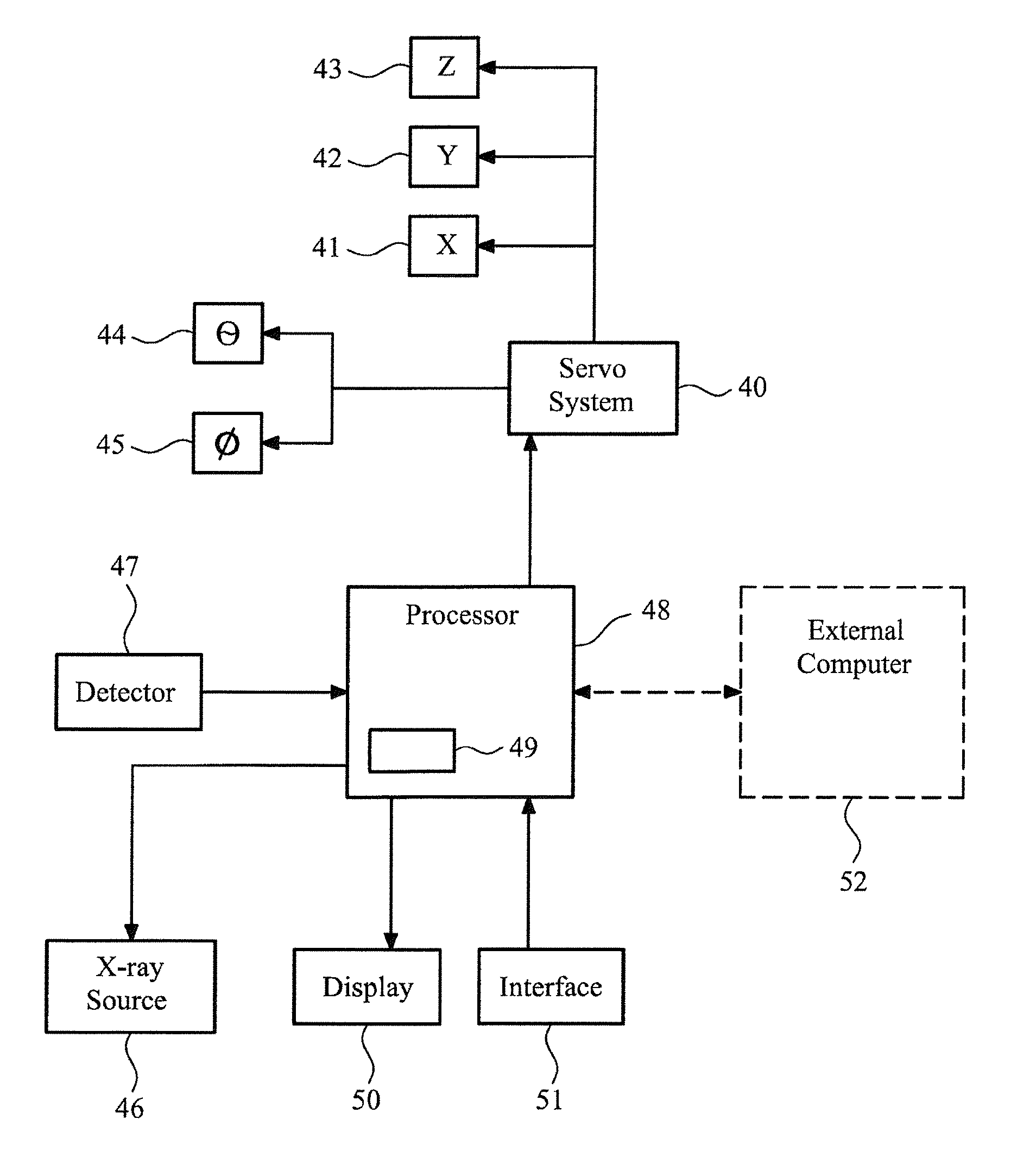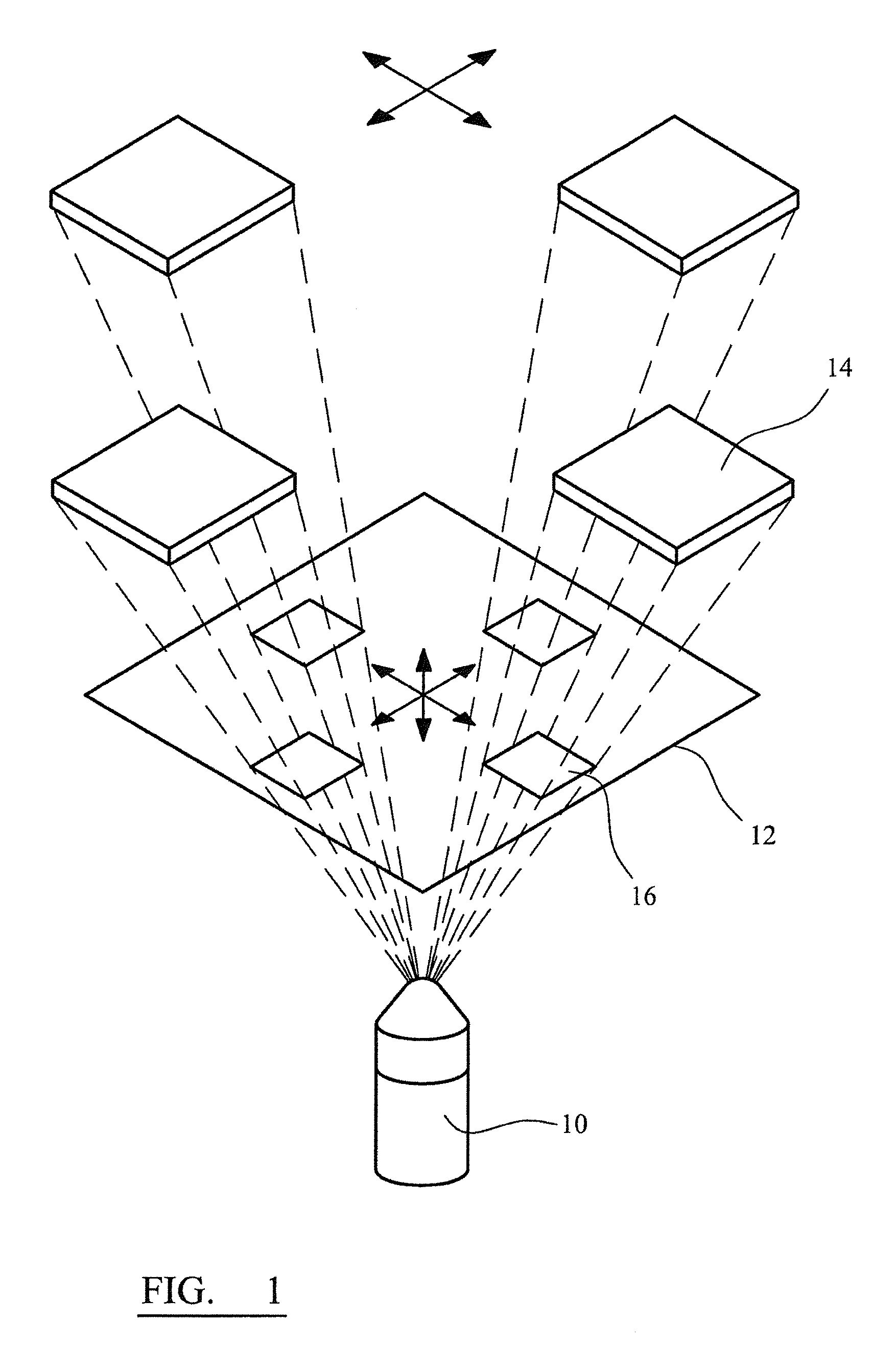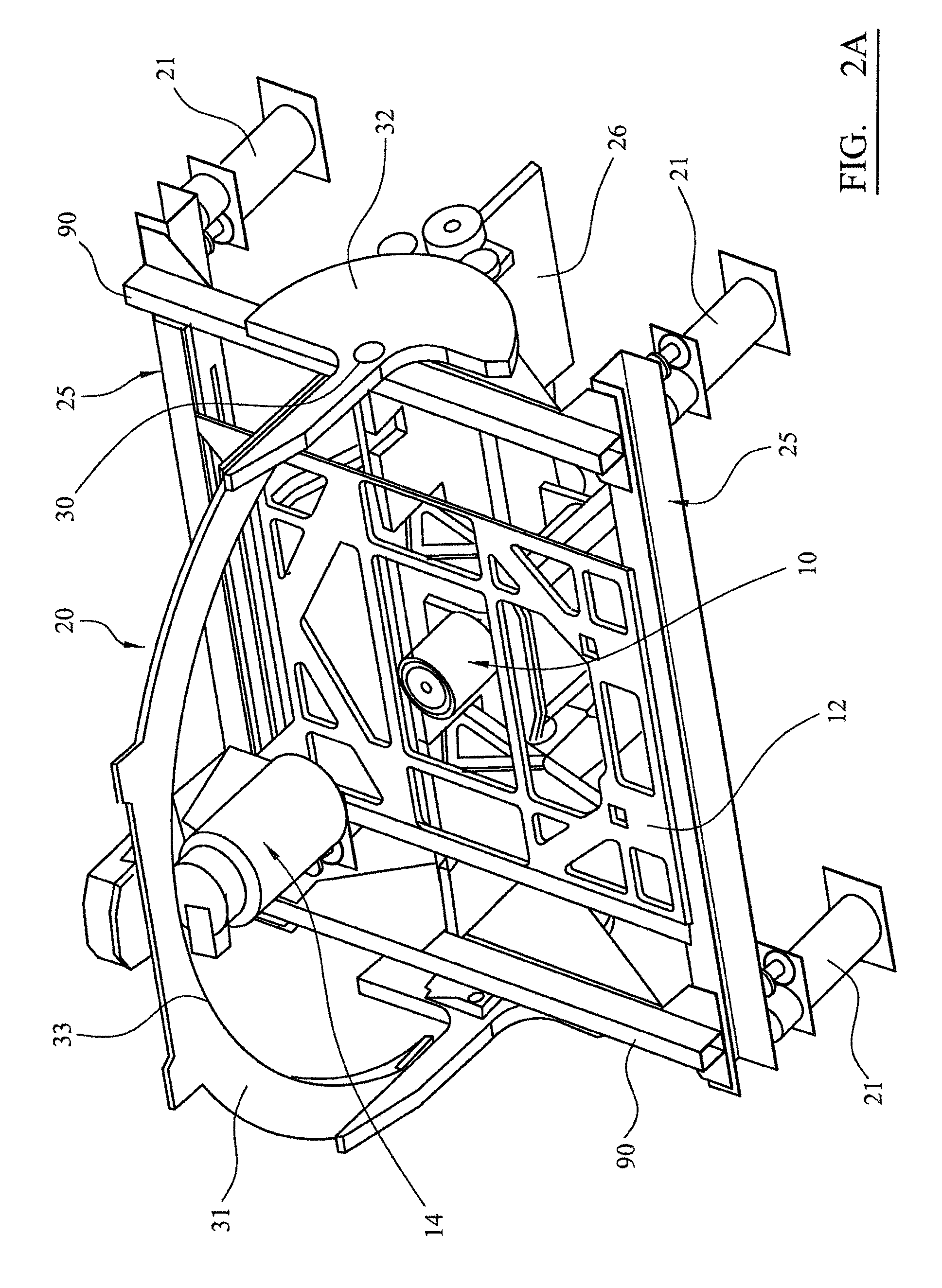Method and apparatus for generating a three-dimensional model of a region of interest using an imaging system
a three-dimensional model and imaging system technology, applied in the field of imaging systems, can solve the problems of insufficient information, complex region of interest, and much more expensive tomosynthetic x-ray imaging systems than two-dimensional x-ray imaging systems, and achieve the effects of improving accuracy, robust detection, and increasing precision
- Summary
- Abstract
- Description
- Claims
- Application Information
AI Technical Summary
Benefits of technology
Problems solved by technology
Method used
Image
Examples
Embodiment Construction
[0053]FIG. 1 is a schematic illustration of the basic elements of an x-ray imaging system. The system shown in FIG. 1 comprises an x-ray source 10, which in this system is held stationary, a moveable support 12 and a moveable detector 14. It is advantageous to keep the x-ray source stationary as it is a relatively bulky and massive component. It also requires very large power cables which are relatively inflexible and difficult to move. X-rays from the x-ray source 10 pass through the support and any target objects mounted on the support, and impinge on the detector 14. FIG. 1 illustrates the areas 16 on the support corresponding to the field of view of the detector 14. The field of view of the detector is selected by a user by the relative positioning of the detector 14, support 12 and x-ray source 10 so that the region of interest of the target object is within the field of view of the detector. The detector can move to different positions so that different projections can be take...
PUM
| Property | Measurement | Unit |
|---|---|---|
| diameter | aaaaa | aaaaa |
| diameter | aaaaa | aaaaa |
| angle | aaaaa | aaaaa |
Abstract
Description
Claims
Application Information
 Login to View More
Login to View More - R&D
- Intellectual Property
- Life Sciences
- Materials
- Tech Scout
- Unparalleled Data Quality
- Higher Quality Content
- 60% Fewer Hallucinations
Browse by: Latest US Patents, China's latest patents, Technical Efficacy Thesaurus, Application Domain, Technology Topic, Popular Technical Reports.
© 2025 PatSnap. All rights reserved.Legal|Privacy policy|Modern Slavery Act Transparency Statement|Sitemap|About US| Contact US: help@patsnap.com



